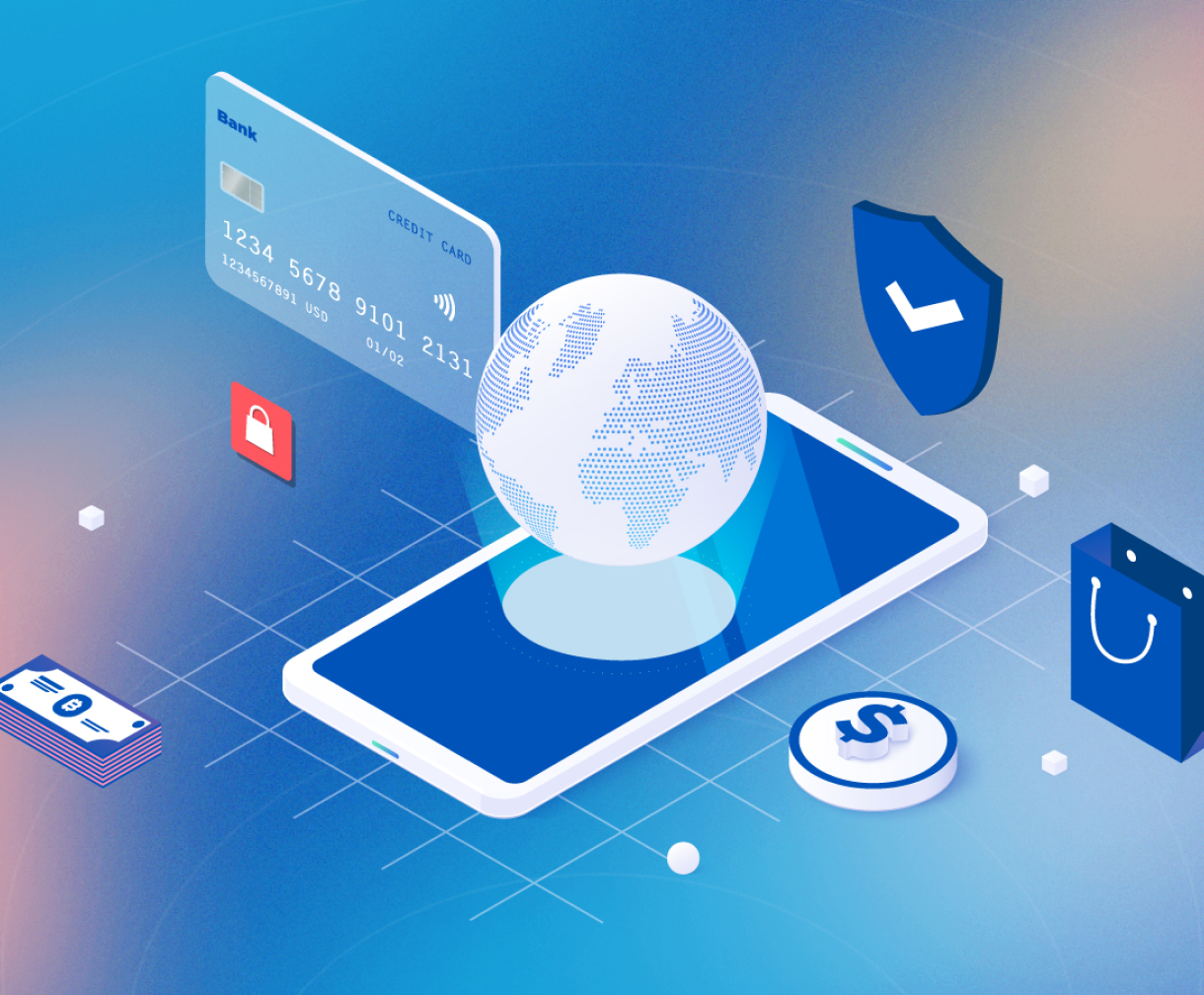Guide on How to Make Cross-Border Payments Faster and Cheaper
Cross-border payments are transactions where the payee and the transaction recipient are based in separate countries.

Table of content
- What are Cross Border Payments?
- Types of Cross-Border Payments
- Cash Flow in Cross-Border Payments
- SWIFT Global Payment Initiative and the Problem it Solves
- Current Issues with Cross-Border Payments
- How to Send Cross-Border Payments?
- How inai Helps with Making Cross-Border Payments Processing Faster and Cheaper?
- Final Thoughts
In 2022, global cross-border payment flows are estimated to exceed US$156 trillion.
However, cross-border payments are frequently more expensive and take longer to process than domestic payments due to the more significant number of parties and processes involved. The idea of making real-time international payments a reality is one of the most intriguing and desirable developments in cross-border payments.
Thankfully, a flurry of new payment innovations is shaking up the trillion-dollar cross-border payments business, promising to alleviate long-standing pain problems. In this blog, we will guide you through the world of cross-border payments and explain how you can make faster and cheaper cross-border payments for your business.
What are Cross Border Payments?
Money transfers between people or businesses in different countries are cross-border payments. The money sender will often choose a front-end provider, such as a bank or a money transfer operator (e.g., PayPal, Wise, Western Union, Transferwise) to initiate the payment. Subsequently, the payment is delivered to the receiver via the channel designated by the sender.
Traditionally, cross-border payments are settled through the Correspondent Banking Network (CBN), which most front-end providers use. However, in recent years, new back-end networks have emerged to optimize cross-border payments, facilitate interoperability between payment systems, and give senders more options for reaching the receiver.
Types of Cross-Border Payments
The cross-border payments landscape has grown increasingly fragmented and competitive, with businesses focused on various geographies, transaction sizes, and payment categories. It's critical for international merchants to be able to accept and process payments in all of the countries they're targeting. Here are some of the essential cross-border payment types:
- Business-to-Business (B2B) Payments: These are the transactions and payments between two businesses. B2B transactions account for the majority of cross-border payments, with more than US$150 trillion predicted in 2022.
- Consumer-to-Business (C2B) Payments: Money that moves from a consumer to a business is referred to as C2B ("Consumer-to-Business"). For example, cross-border e-commerce and offline tourism spending come under the C2B category. These payments are forecast to reach US$2.8 trillion in 2022.
- Business-to-Consumer (B2C) Payments: These are the payments made by businesses to their consumers/employees. These payments include interest payments or salaries and are expected to amount to US$1.6 trillion in 2022.
- Consumer-to-Consumer (C2C) Payments: These payments, also known as P2P (Peer-to-Peer) or remittance payments, are becoming one of the most preferred cross-border payment types and will contribute around US$0.8 trillion in 2022 to the whole cross-border payment market.
Cash Flow in Cross-Border Payments

Source: Payments Canada
Most cross-border transactions are made through a network of correspondent banks, which is how most jurisdictions execute cross-border transactions. During the transaction process, correspondent banking cross-border transactions can include many banks. In its most basic form, the correspondent keeps deposits held by other responder banks and offers payment services to those banks. This is essentially a bilateral arrangement between the two banks to provide services to one another.
A straight bilateral correspondent connection exists between two banks in the most basic kind of cross-border correspondent banking. Bill in Singapore, for example, wishes to send S$100 to Allison in the United States. To do so, Bill will request payment from Bank A in Singapore, which holds Bank B's Nostro account in the United States. Because Bank A and Bank B have a direct bilateral account relationship, the settlement instruction and payment information can be sent in one message.
MT103 is the SWIFT standard for such a payment message.
On the other hand, banks don't always have direct bilateral correspondent ties with their designated receiving bank. Many banks may act as intermediaries for the funds to be transferred in certain circumstances.
Several payment fintech companies like Apple Pay and Google Pay also rely on this correspondent banking methodology for cross-border payments. Making cross-border payments using such global fintech essentially means you are relying on a transfer pricing model for payment. Here, the amount to be transferred is stored as foreign exchange in banks located in different countries.
Cross-border payments made using such businesses' services are effectively ON-US transactions in their global balance sheets, with funds simply moving from one e-wallet to another. Large corporations use transfer pricing to manage their tax reporting and other parts of their asset-liability management across the numerous jurisdictions in which they operate. As a result, the emergence of these corporations' fintech sections may be fueled by factors other than payment services, such as tax harmonization.
SWIFT Global Payment Initiative and the Problem it Solves
SWIFT GPI (Global Payment Initiative) was launched in 2017 to eliminate inefficiencies in existing messaging and processing systems between financial institutions (FIs) by standardizing the message format used in cross-border payments. As a result, more than 95% of SWIFT payments can now be handled within 24 hours of the transaction taking place. In addition, the SWIFT GPI now features immediate global payments and GPI stop and go capability, with a focus on accelerating cross-border B2B transactions.
Over 1100 financial institutions (FIs) worldwide facilitate the flow of payment messages over SWIFT GPI, with over $300 billion transferred daily. The SWIFT Global Payment Initiative delivers transparency and visibility to cross-border payments with REAL-TIME TRACKING AND CREDIT DATA. In addition, businesses can include up to 140 characters of remittance information in their SWIFT messages to help their recipients understand the payment details. As a result, businesses have easy information access, better cash management, and a shorter turnaround time.
Current Issues with Cross-Border Payments
.jpg)
When international companies send or receive payments from overseas, they face several challenges, which present a barrier to international trade in goods and services. Here are some of the critical issues businesses and individuals face while making cross-border payments:
1. Lack of Transparency in FX Rates
Due to hefty foreign exchange rates, end-users typically see considerable losses in the total amount they receive while making cross-border payments. Payment losses might be significant if the payment provider does not use mid-market exchange rates.
Furthermore, cross-border cheque payments have the additional disadvantage of increasing operational complexity due to delays, misplaced checks, and fraud, which are costly to administer. Loss of revenue and profit and consumer unhappiness are two of the outcomes. The loss is compounded further if the business or financial institution is responsible for the expense of the cross-border payout.
2. Slow Delivery of Payments
Depending on the target country, sending funds internationally can take some time. Thanks to the development of cross-border payout systems, it is now possible to send real-time payments within the European Union. When payments must be delivered via more minor usual routes, international wire transfers might take up to 5 days to reach their destination.
If the recipient requires cash, it may take longer to receive the payment, depending on the manner and accessibility of the cash pick-up site. Most cash payout companies have a restricted banking network or only offer services in major cities and their surrounding areas. If the beneficiary must go to a faraway place to collect the funds, the reimbursements may be significantly delayed.
If the payment is made by cheque, it may take many months for the cheque to be received and cleared by the recipient's bank.
3. Inability to Penetrate Customers from Remote Locations
Many businesses, particularly pension payment institutions, experience difficulties sending foreign payments to consumers who live in remote or rural areas.
Traditional cash payments become a substantial challenge if the recipient lives in a remote location where the nearest bank branch is kilometers away. Accessibility issues caused by poor infrastructure and connectivity and limited operation hours might cause payment disbursements to be severely delayed.
Most internationally recognized cash payment service providers do not necessarily have a broad network to reach rural areas while making payouts in various nations. It can be a problem for businesses that rely on digital nomads or pension funds that need to pay out to beneficiaries who have returned to their faraway homes.
4. Unreliable and Insufficient Routes
The existing cash payment channels are frequently insufficient and unreliable. Many cash payment service providers find it challenging to provide enough cash pick-up locations. Even though they have an extensive network of nations, they may only have a limited number of cash collection sites within each of those countries.
Furthermore, beneficiaries may not be able to receive payments consistently because cash payout routes may be discontinued, posing a challenge for businesses that need to make recurring payments to beneficiaries, particularly in the case of pension payments, where customers are likely to rely on the income.
5. Lack of Payment Security
Due to limited access to the national infrastructure at the payout destination, payments conducted via the foreign correspondent banking network may lack transparency. As a result, the payment process is chaotic and unreliable.
It's possible that the payout institution doesn't have access to payment tracking or doesn't understand or realize what's causing the delay unless they utilize a payment service provider (PSP) with the technology to make deeper payment integrations, increasing payment transparency and efficiency.
When making an international payment via cheque, you have very little influence over what occurs once it is mailed. The unpredictability of this approach makes payments unreliable in terms of when they will arrive at their destination and risky because cheques can be stolen along the route and cashed by the incorrect person. A recipient's family, for example, may continue to receive the recipient's pension long after the person has died.
6. High Cross-Border Payment Fees
International payments are more expensive than domestic payments, owing to the complexities and dangers involved. Payment clearing, settlement, and foreign exchange conversion are all controlled by traditional correspondent banking networks, which is a non-transparent procedure that might result in expensive transfer fees.
When payments are made in cash, the situation gets more complicated because the corporation or end-user has no idea how much the transaction will cost. Due to a lack of interbank agreements, clients are at the whim of individual banks, which can charge exorbitant fees for cashing an international cheque or receiving an international wire transfer that must be paid in cash.
How to Send Cross-Border Payments?
Cross-Border Payments can be made in a variety of ways. The most common methods of sending funds across borders include bank transfers, credit card payments, and Alternative Payment Methods (APMs). The best payment method for your business will be determined by where you are located and where you want to make payments.
You'll need the recipient's International Bank Account Number (IBAN) and (Bank Identifier Code) BIC and their personal information to make an international bank transfer. B2B and B2C SWIFT payments are also available to merchants.
Credit cards are a convenient tool for consumers to make international online payments. They only need to provide their card information; however, there are frequently higher transaction and FX fees.
How inai Helps with Making Cross-Border Payments Processing Faster and Cheaper?
With the help of inai, businesses and customers can eliminate their cross-border payment complexities and minimize operational costs. While companies focus on their core business, inai takes care of all their cross-border payment woes. Here is how inai helps your business make cross-border payments faster and cheaper:
1. Integrating with Local Payment Methods and Local Payment Processors
We power your business through seamless integrations with multiple payment processors and local payment methods. Local processing has several advantages for both you and your clients. With inai, you can reach your local customers, globally by showcasing a full range of alternative local methods, depending on the country, language, and more!
2. Connect Pay-Ins and Pay-Outs
No matter what your line of business is, inai can simplify the way you make instant pay-ins and payouts by integrating APIs & automating payments like never before! Seamlessly connecting pay-ins and payouts enables a faster processing of cross-border payments and a much-improved level of transparency throughout the payment process.
3. Smart Routings
inai's algorithm continuously monitors and tracks payment failures across the payment ecosystem, as well as merchant context, and makes automated routing decisions based on:
- Approval rates
- Authorization rates
- Transaction charges
- Processing rates
- Downtimes across payment methods / PGs
4. Provide Tokenization and Vaulting
The payment vault and tokenization solutions from inai are at the heart of our PCI solution for enterprises. All of our client payment information is stored in our payment vault, one of the most secure locations for payment data storage. The token can be freely stored on the client's servers because there is no method to decrypt the inai token to determine the original payment information.
5. Offering Borderless Payment Methods Like Crypto
By offering peer-to-peer, borderless payment methods like cryptocurrency, inai has made affairs even simpler and more efficient. Business owners can use inai's platform to accept and process digital crypto payments, thus reducing the hassle of high transaction fees and increase processing time. Inai's crypto payment gateway also protects crypto-friendly businesses from chargeback fraud.
Final Thoughts
The rise of fintech has raised the standard for customers' payment experience. Users today want cross-border payment systems that are faster, cheaper, and more transparent, with options tailored to their unique needs. Cross-border payments have a bright future ahead of them, with real-time international transfers and minimal transaction fees on the horizon. With global eCommerce on the rise, businesses now can streamline their processes for sending and receiving foreign payments.







Let’s get started








.png?width=123&height=71&name=inai%20logo%20-%20dark%201(1).png)